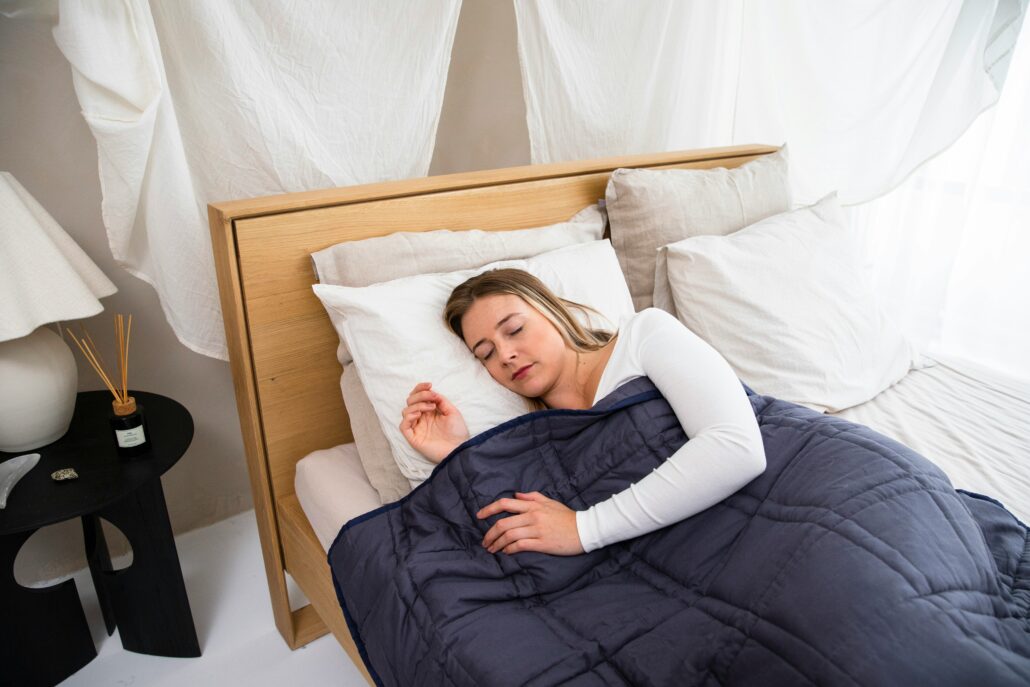Establishing a Bedtime Routine: How to Help Your Kids Sleep Better
One of the biggest challenges in parenting is establishing a consistent bedtime for your child. To make your evenings smoother, consider creating a bedtime routine!
Research shows that children benefit from a bedtime routine in several ways: language development, literacy, child emotional and behavioral regulation, parent-child attachment, and family functioning. Further, a consistent bedtime routine promotes healthy sleep for children when it incorporates activities related to nutrition, hygiene, communication, and physical contact.
A bedtime routine doesn’t have to be complex and it can even be fun! To make bedtime more enjoyable, we’ve created a simple to follow guide for creating and maintaining a consistent bedtime routine that can help your child fall asleep more easily and enjoy restful nights. Let’s dive in!
Set a Consistent Time for a Bed Routine
A successful bedtime routine relies on consistency and timing. Children who go to bed and wake up at the same time every day benefit from aligning their natural circadian rhythm, making it easier for them to fall asleep. Consistency ensures that your child is getting enough sleep and waking up feeling refreshed.
A recent Better Sleep Council survey shows that 89 percent of children whose parents considered them excellent sleepers reported that their child has a consistent bedtime on at least three of five school nights. The survey also shows that children without a consistent bedtime on school nights are 3.5 times more likely to sleep poorly.
How do you determine the correct bedtime for your child?
Start by figuring out their morning wake-up time.. Then count backwards using these guidelines to calculate their ideal bedtime:
- Babies (4 to 12 months old): 12 to 16 hours, including naps
- Toddlers (12 to 24 months old): 11 to 14 hours, including naps
- Preschoolers (3 to 5 years old): 10 to 13 hours, including naps
- School-Aged Children (6 to 12 years old): 9 to 12 hours
- Teenagers (13 to 18 years old): 8 to 10 hours
For example, if your 5-year-old needs to wake up at 7:30 a.m., their bedtime should be between 6:30 p.m. and 9:30 p.m. Then, add the time you plan to spend winding down for the night, which we will cover next!
Wind-Down Activities for Healthy Sleep
Winding-down activities signal that bedtime is approaching and can give your child a good chance for a restful night’s sleep. Babies may begin drifting off to sleep after a soothing lullaby. Toddlers and young school-age children may like to play an easy family card game before it’s time for bed, while teenagers may enjoy listening to music to help them relax. A warm bath can be especially effective for kids of all ages as it relaxes the muscles and raises body temperature. When they cool down, it mimics the natural drop in temperature making it easier to fall asleep.
Parents magazine suggests allotting 15 to 60 minutes for a bedtime routine, depending on your child’s age and how established they are with the routine. If the evening includes a bath or shower, make sure to add a little extra time.
Here are some additional suggestions for calming bedtime activities to help your kids sleep better!
Babies
Short, soothing bedtime activities are good for newborns and infants because they are in the early stages of learning when to sleep. Wind-down activities may feel like a broken record at this age, but don’t worry! If you think your routine is too dull because your baby prefers the same bedtime story night after night, they’ll eventually learn to enjoy other things. Consider a few of these activities for your baby’s bedtime routine:
- Diaper changes
- Swaddling or dressing in sleep sacks/pajamas
- Feeding
- White noise
- Lullabies
- Books
- Bath
- Gentle Rocking
Toddlers and Preschoolers
Toddlers and preschoolers are typically energetic and curious, making winding down challenging for this age group. Choosing calming activities your toddler or preschooler enjoys can help them wind down quicker – without throwing a tantrum. Good activities that signal bedtime are putting away toys in their play area and brushing their teeth. Depending on their interests, you can also add these activities to their bedtime routine:
- Reading books together
- Working on a puzzle
- Talking about their day
- Sensory activities such as swinging or rocking
- A light, sugar-free snack
School-Aged Children and Teens
School-aged children and teens have added responsibilities that can interfere with bedtime routines, such as homework, sports, time with friends, or part-time employment. Since their lives are busier, they need to turn off their minds to get a good night’s sleep.
Particularly with teenagers, their bedtime routine becomes a bit less structured, and they can do many activities independently. Some relaxing activities to suggest include:
- Gentle stretching or yoga
- Guided meditation
- Deep breathing exercises
- Arts and crafts
- Journaling
- Listening to relaxing music
- Preparing for the next day
You may have noticed that these bedtime activities don’t include screens. If your child has screen time, consider changing the backlight to “night mode” at least three hours before bedtime, and then turn it off or put it away at least one hour prior to bed. Not only does this give their eyes a break, but screens emit blue light that interferes with melatonin production, a hormone that regulates sleep.
Regarding smartphones, the Better Sleep Council survey found that children who have access to or use smartphones before bed on school nights make up 65% of poor sleepers, and those who don’t use smartphones before bed are 1.8 times more likely to be excellent sleepers.
Maintaining Your Child’s Bedtime Routine
Now that you know how to create a bedtime routine, ensure it sticks! Remember, a consistent bedtime routine leads to healthier sleep and good bedtime habits that continue into adulthood.
Create a Cozy Bedroom
A unique, personalized space for sleep not only signals that it’s time for bed but that it’s time to relax. As your child ages, you’ll want to maintain a sense of tranquility by adjusting these elements of a cozy bedroom:
- Lighting: Room-darkening window coverings keep evening and morning light from interrupting your child’s sleep. You may want to include turning off the lights in their bedtime routine because sleeping in a dark space is healthier for your child.
If monsters under the bed are a nightly complaint, a dimmer switch allows just enough light in their room so they feel safe and secure. Again, turn off or remove screens from your child’s bedroom to eliminate blue lights. Yellow light, not blue or LED lighting, is recommended for bedrooms.
- Sound: Shutting the bedroom door signals that it’s time to sleep and blocks noise from the rest of your house. If your child has a hard time sleeping in complete silence, consider using white or brown noise from a fan, air purifier, or white noise machine.
- Temperature: A bedroom that is too hot or cold can disrupt your child’s sleep. A temperature around 65 degrees Fahrenheit is ideal for most children. For babies, the temperature should be a bit higher – between 65 and 70 degrees Fahrenheit – since their bodies are still developing and they cannot regulate their body temperature.
- Bedding: As your child grows, their bed and mattress should grow with them. When your child is two years old or 35 inches tall, it’s time to consider moving them from a crib to a regular bed. Twin mattresses are a good size for this transition, but parents are increasingly opting for full sizes that accommodate their growth and changing needs. However, if their mattress is over seven years old, it’s time for a replacement!
Make Adjustments as Needed
When changing your child’s bedtime routine, remember that it may take a few days or weeks to fully adjust. A few occasions that may require adjustments include:
- Needing a different amount of sleep
- Periods of stress
- Moving to a new home
- Starting or finishing a school year
- Illnesses
Celebrate Your Child’s Bedtime Routine
Establishing a consistent bedtime routine for your child can be an enjoyable process, but it won’t happen overnight. Feel free to experiment with different times and wind-down activities to find the best combination for your child. It will all be worth it when your child – and the rest of your family – fall asleep easier and enjoy more restful nights!



